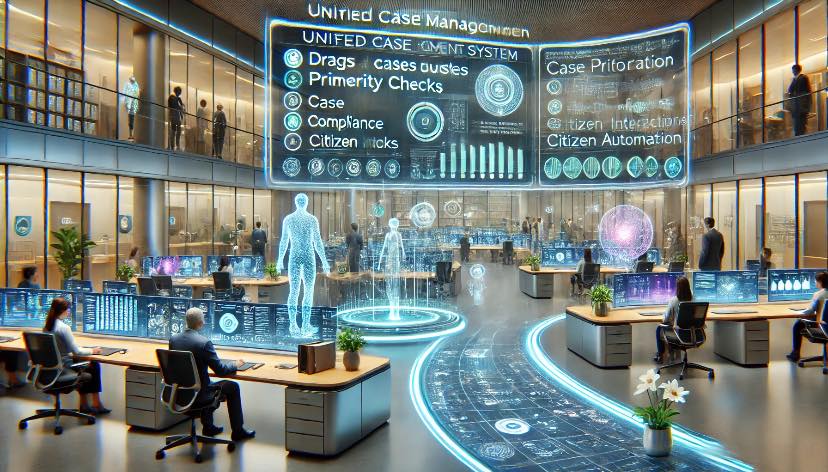
After his journey of uncovering divine patterns in the stories of the prophets, Kavi turned his attention to a new challenge: the inefficiency of his government. He noticed that as society evolved, new programs and services were created to meet unique needs. Different departments were established to manage various licenses, certifications, and claims. However, this led to a fragmented system where each department operated in isolation, with its own processes, case management systems, and workflows. The result was inefficiency, redundancy, and rising operational costs.
Kavi, with his sharp analytical mind and pattern recognition skills, decided to tackle this complexity. He began by observing the underlying service that the government provided: the management of cases. Whether it was issuing a license, processing a claim, or handling a certification, each task was essentially a “case” that needed to be managed. Over time, these cases had been divided into silos, with different departments building their own systems and processes. Kavi realized that this fragmentation was the root cause of inefficiency.
Using his logical faculties, Kavi identified the common patterns across these departments. He saw that while the specifics of each case varied—licenses, claims, certifications—the core processes were similar: intake, prioritization, documentation, compliance, decision-making, and resolution. He proposed a bold solution: consolidate all licensing and claim processing under a single department, supported by a unified case management system. This system would be powered by specialized AI agents, each designed to handle a specific aspect of case management.
Kavi outlined the following AI agents to streamline operations:
– Case Prioritization Agent: Analyzes and prioritizes cases based on urgency, impact, and regulatory deadlines, ensuring that critical cases are addressed first.
– Document Management Agent: Automates the extraction, validation, and summarization of information from case-related documents, reducing manual effort and errors.
– Business Rules Management Agent: Automates the creation, validation and maintenance of different kind of business rules .
– Compliance and Regulation Advisor Agent: Provides real-time guidance on regulatory requirements, ensuring that all cases comply with government policies and laws.
– Citizen Interaction Agent: Acts as a virtual assistant, handling citizen queries, gathering case information, and providing updates, improving citizen satisfaction and reducing the burden on human staff.
– Investigator Agent: Assists in investigating complex cases by correlating data across multiple sources, uncovering patterns, and identifying potential fraud or errors.
– Decision Support Agent: Helps officials make informed decisions by analyzing case history, data trends, and predictive insights, ensuring consistency and fairness.
– Workflow Automation Agent: Optimizes and automates repetitive administrative tasks, such as notifications, approvals, and escalations, speeding up the case lifecycle.
– Cross-Agency Collaboration Agent: Facilitates seamless communication and data sharing across different government departments, breaking down silos and improving coordination.
– Ethics and Bias Monitoring Agent: Monitor AI algorithms for potential biases in decisions , flag cases where human review is necessary to avoid discrimination, maintain audit logs for transparency and accountability, ensuring fairness, equity, and unbiased decision-making in case resolutions.
Kavi also emphasized the importance of a multi-tenant architecture for these AI agents. This would allow other governments around the world to easily configure and replicate the system, adapting it to their unique needs without starting from scratch. By sharing a common framework, governments could collaborate, share best practices, and reduce development costs.
The impact of Kavi’s solution was transformative. The government became more efficient, with cases processed faster, costs reduced, and citizens more satisfied. The unified case management system eliminated redundancies, while the AI agents handled repetitive tasks, freeing up human employees to focus on complex and high-value work. Other governments, inspired by Kavi’s model, began adopting the system, creating a network of efficient, interconnected governments.
Kavi’s journey from the finite to the infinite had taken a new turn. By applying his skills of logic and pattern recognition, he had not only uncovered divine wisdom but also transformed the way governments serve their people. He had shown that beneath the surface complexity of systems lies a simple, elegant truth: efficiency comes from understanding the patterns that connect us all.

